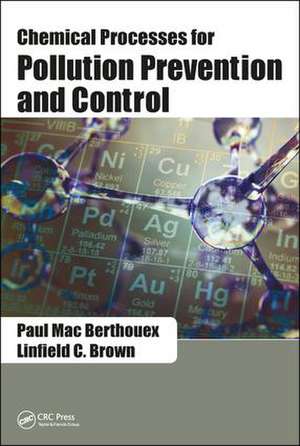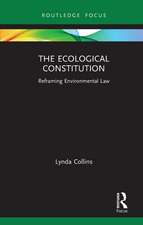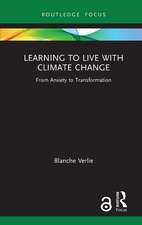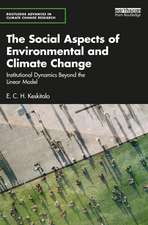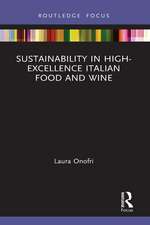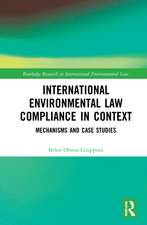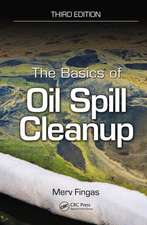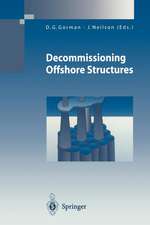Chemical Processes for Pollution Prevention and Control
Autor Paul Mac Berthouex, Linfield C. Brownen Limba Engleză Hardback – 9 oct 2017
Preț: 626.26 lei
Preț vechi: 877.41 lei
-29% Nou
Puncte Express: 939
Preț estimativ în valută:
119.83€ • 125.12$ • 99.18£
119.83€ • 125.12$ • 99.18£
Carte tipărită la comandă
Livrare economică 05-19 aprilie
Preluare comenzi: 021 569.72.76
Specificații
ISBN-13: 9781138106321
ISBN-10: 1138106321
Pagini: 244
Ilustrații: 95 Line drawings, color; 18 Halftones, color; 65 Tables, black and white; 113 Illustrations, color
Dimensiuni: 178 x 254 x 18 mm
Greutate: 0.52 kg
Ediția:1
Editura: CRC Press
Colecția CRC Press
ISBN-10: 1138106321
Pagini: 244
Ilustrații: 95 Line drawings, color; 18 Halftones, color; 65 Tables, black and white; 113 Illustrations, color
Dimensiuni: 178 x 254 x 18 mm
Greutate: 0.52 kg
Ediția:1
Editura: CRC Press
Colecția CRC Press
Cuprins
The Chemical Process Design Problem. Introduction. Chemical Processes. Process Analysis. Process Synthesis. Stoichiometry. Equilibrium. Kinetics. Green Chemistry. About This Book. Pollution and Pollutants. Pollutants. Elements of Life. Aggregated or Lumped Measurements. Turbidity. Color. Particulate and Dissolved Solids. Dissolved Organic Matter (DOM) and Natural Organic Matter (NOM). Total Organic Carbon (TOC). Chemical Oxygen Demand (COD). Biochemical Oxygen Demand (BOD). Iron and Manganese. Hardness, Calcium and Magnesium. pH. Alkalinity. Nitrogen. Phosphorus. Sulfur. Toxic Metals. Conclusion. Organic Pollutants. A Brief Introduction to Naming Organic Chemicals. Hydrocarbons – The Alkanes. Hydrocarbons – The Alkenes. Hydrocarbons – The Alcohols. Organic Acids and Aldehydes. Other Classes of Organic Molecules. What Has Been Learned So Far. Aromatic Hydrocarbons – Benzene and the BTEX Chemicals. Polycyclic Aromatic Hydrocarbons (PAHs). Polychlorinated Biphenyls (PCBs). Dioxins and Furans. Pesticides. Solvents and Volatile Organic Chemicals (VOCs). Conclusion. Measuring Pollutants. The Design Problem. The Fundamental Units of Measurement. Mass Concentration – Parts per million and mg/L. Mass Percentage and Mass Fraction. Mass Flow Rates. Volume Fraction and Volume Concentration. Converting Volume and Mass Concentrations in Gases. Molar Mass and Molar Concentration. Equivalent Weights. Conclusion. Stoichiometry. The Design Problem. Elements and Compounds. Atomic and Molecular Masses. Stoichiometry. Case Study - Ammonium Sulfate Fertilizer. Empirical Chemical Formulas. Conclusion. Empirical Stoichiometry. The Design Problem. Empirical Stoichiometry by Experiment - Jar Tests. Coagulation and Flocculation. Empirical Stoichiometry – Estimating Solid Reaction Products. Case Study - Stormwater Treatment by Coagulation (Yonge 2011). Statistical Experimental Design for Jar Testing (And a Case A Study of Emulsified Oil Removal). Case Study - Decolorization Experiment (Hribernik 2009). Case Study - Ethylene Glycol Factorial Experiments (Akesrisakyl 2007). Conclusion. Chemical Equilibrium for Acids and Bases. The Design Problem. Chemical Equilibrium. Ionization of Water. pH. pH Control and Neutralization. Acid-Base Reactions. The ICE Table and Solving Equilibrium Problems. Chlorination. Carbonates and Alkalinity. Another Look at Acid-Base Equilibria Using pK Values. Conclusion. Precipitation Reactions. The Design Problem. Insoluble Compounds. Solubility Products. Inventing a Useful Precipitation Process. Precipitating Metals as Hydroxides. Precipitating Metals as Sulfides. Softening. Chemical Phosphorus Removal. Struvite Precipitation and Nutrient Recovery. Leaching Metals from Sludge. Conclusion. Oxidation–Reduction Reactions. The Design Problem. Oxidation Numbers. Oxidation- Reduction Reactions. Useful Oxidation-Reduction Reactions. Fenton’s Chemistry. Case Study: Rehabilitation of Waste Pickle Liquor. Case Study –An Integrated Acid Recovery Process. Conclusion. Green Chemistry. The Design Problem. The Principles of Green Chemistry. Types of Chemical Reactions. Measures of Reaction Efficiency. Solvents. Catalysis. Case Study – Soda Ash Production. Case Study – Red Mud. Nylon and Adipic Acid Synthesis. Conclusion. Kinetics. The Design Problem. Reaction Rates – Some Generalizations. Rates of Reaction. Rate Laws for Elementary Reactions. Temperature Dependence of Rate Coefficients. First-Order Reactions. Second-Order Reactions. Reversible Reactions. Sequential Reactions.
Recenzii
"The contents of the book are shown in a didactic way through figures, tables and practical examples. The language is suitable for a direct learning, facilitated by the theoretical-practical combination of the chemical and physical approach to the environmental problem."
—Marisol Andrea Belmonte Soto, Universidad de Playa Ancha, Valparaíso, Chile
"A good guide for understanding waste and pollution and the importance for preventing pollution. Equipped with a good amount of examples as well as appropriate conceptual and theoretical background, this book has a unique approach to pollution problem and its control. It has integrated pollution prevention and control, as well as air, water, and solid waste management."
—Mohammad Zandi, University of Sheffield, United Kingdom
"Since many environmental engineering students have forgotten their basic chemistry skills, this book allows them to remember very easily. One of the highlights of the book is its direct language, so it is easy to understand by the student. It is also concise, allowing the student to review / learn the concepts quickly. This is very important since it will be an auxiliary book of the subject. The authors' experience in this area allows them to contribute a series of case studies where theoretical knowledge is applied to address real environmental problems. In this way, the student succeeds in capturing the practical usefulness of the concepts studied and understanding their importance in his future work performance."
—José Luis Campos Gómez, Universidad Adolfo Ibáñez, Chile
"I believe this book will be a valuable contribution to the environmental chemistry and pollution prevention literature and would be a welcome, modern addition to the current selection of textbooks. These authors have a unique perspective to Environmental Engineering that I find welcome because it focuses on problem solving rather than the general chemistry of the environment, for which there is a large selection of fine books."
—David Stevens, Utah State University, USA
"Chemical Processes for Pollution Prevention and Controlcovers chemistry fundamentals applicable to water, wastewater, and air pollution. It’s both an invaluable text for undergraduate and graduate students. Also, it’s an excellent refresher and reference for practicing engineers. It’s easy to use and to skim for topics of interest."
—David Hendricks, Colorado State University, USA
"… provides a thorough knowledge on the chemistry of pollutants and ways to mitigate them. The narrative on Green Chemistry adds value to the book by solving case studies that guide the implementation of pollution prevention and mitigation strategies."
—Debalina Sengupta, Texas A&M University, College Station, Texas, USA
"Written in a simple and easy-to-read style, the book provides the essentials of treatment of inorganic waste by various technologies and provides a relative comparison of these methods. It is a valuable learning tool for students who are not exposed to this area."
—P A Ramachandran, Washington University at St. Louis, Missouri, USA
—Marisol Andrea Belmonte Soto, Universidad de Playa Ancha, Valparaíso, Chile
"A good guide for understanding waste and pollution and the importance for preventing pollution. Equipped with a good amount of examples as well as appropriate conceptual and theoretical background, this book has a unique approach to pollution problem and its control. It has integrated pollution prevention and control, as well as air, water, and solid waste management."
—Mohammad Zandi, University of Sheffield, United Kingdom
"Since many environmental engineering students have forgotten their basic chemistry skills, this book allows them to remember very easily. One of the highlights of the book is its direct language, so it is easy to understand by the student. It is also concise, allowing the student to review / learn the concepts quickly. This is very important since it will be an auxiliary book of the subject. The authors' experience in this area allows them to contribute a series of case studies where theoretical knowledge is applied to address real environmental problems. In this way, the student succeeds in capturing the practical usefulness of the concepts studied and understanding their importance in his future work performance."
—José Luis Campos Gómez, Universidad Adolfo Ibáñez, Chile
"I believe this book will be a valuable contribution to the environmental chemistry and pollution prevention literature and would be a welcome, modern addition to the current selection of textbooks. These authors have a unique perspective to Environmental Engineering that I find welcome because it focuses on problem solving rather than the general chemistry of the environment, for which there is a large selection of fine books."
—David Stevens, Utah State University, USA
"Chemical Processes for Pollution Prevention and Controlcovers chemistry fundamentals applicable to water, wastewater, and air pollution. It’s both an invaluable text for undergraduate and graduate students. Also, it’s an excellent refresher and reference for practicing engineers. It’s easy to use and to skim for topics of interest."
—David Hendricks, Colorado State University, USA
"… provides a thorough knowledge on the chemistry of pollutants and ways to mitigate them. The narrative on Green Chemistry adds value to the book by solving case studies that guide the implementation of pollution prevention and mitigation strategies."
—Debalina Sengupta, Texas A&M University, College Station, Texas, USA
"Written in a simple and easy-to-read style, the book provides the essentials of treatment of inorganic waste by various technologies and provides a relative comparison of these methods. It is a valuable learning tool for students who are not exposed to this area."
—P A Ramachandran, Washington University at St. Louis, Missouri, USA
Descriere
This book examines how chemistry, chemical processes, and transformations are used for pollution prevention and control. Pollution prevention reduces or eliminates pollution at the source, whereas pollution control involves destroying, reducing, or managing pollutants that cannot be eliminated at the source.
